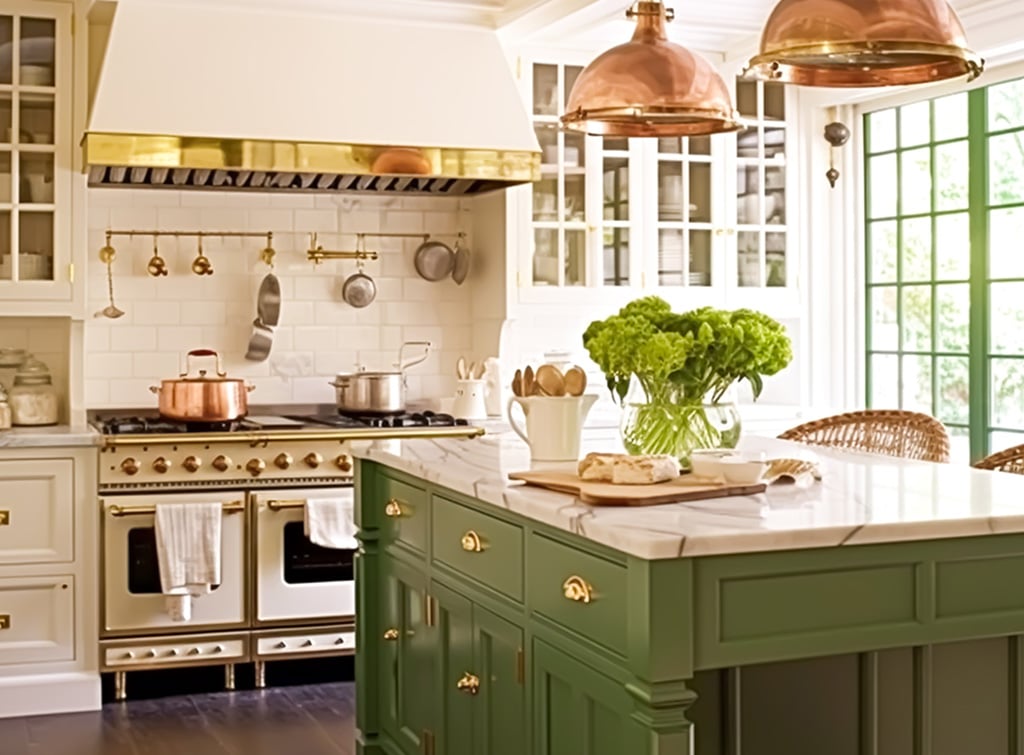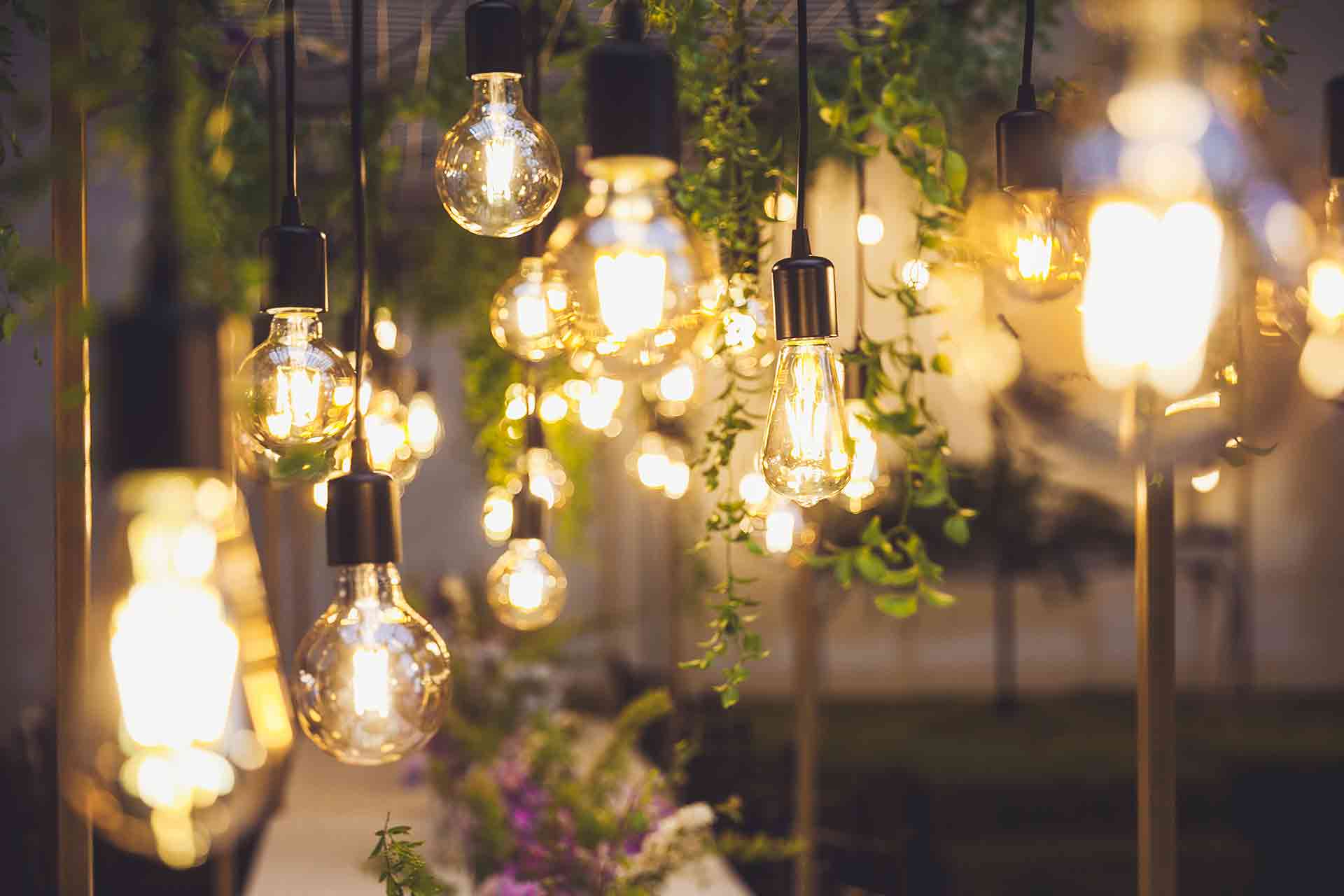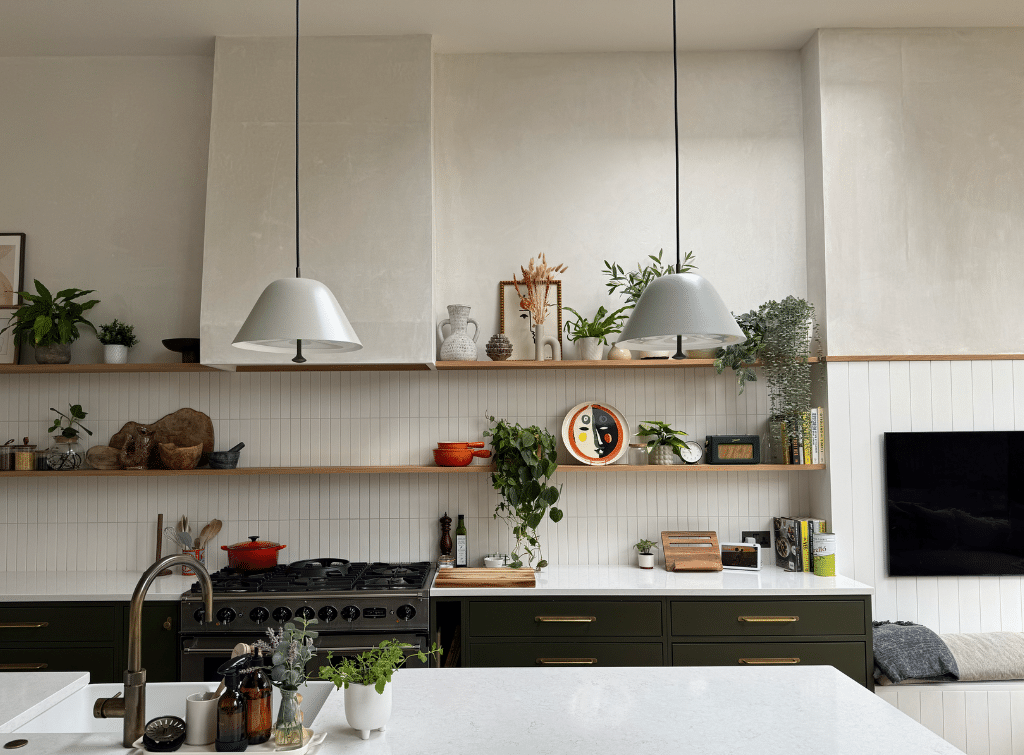Blog>Expert Advice>Buying guide: Helping you to choose your kitchen ceiling lighting
Last updated: 15 November 2024
Buying guide: Helping you to choose your kitchen ceiling lighting
We cover the ins and outs of kitchen ceiling lighting so you can choose the best options for your home.
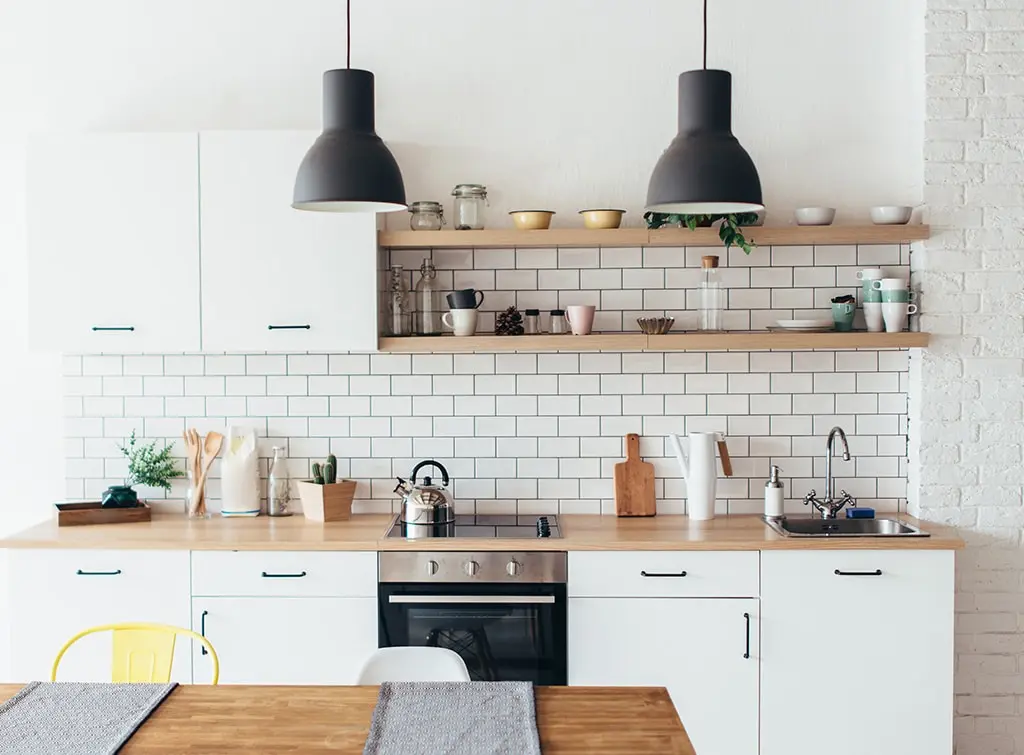
Choosing the right lighting for your kitchen ceiling is crucial. But it can often feel like an overwhelming task, especially with such a wide range of lighting options available.
So whether you're doing a full kitchen renovation or refreshing your existing ceiling light fixtures, you'll find everything you need in this guide to kitchen ceiling lighting.
For safe and competent installation of kitchen ceiling lights, we always recommend hiring a qualified electrician.
The importance of kitchen ceiling lighting
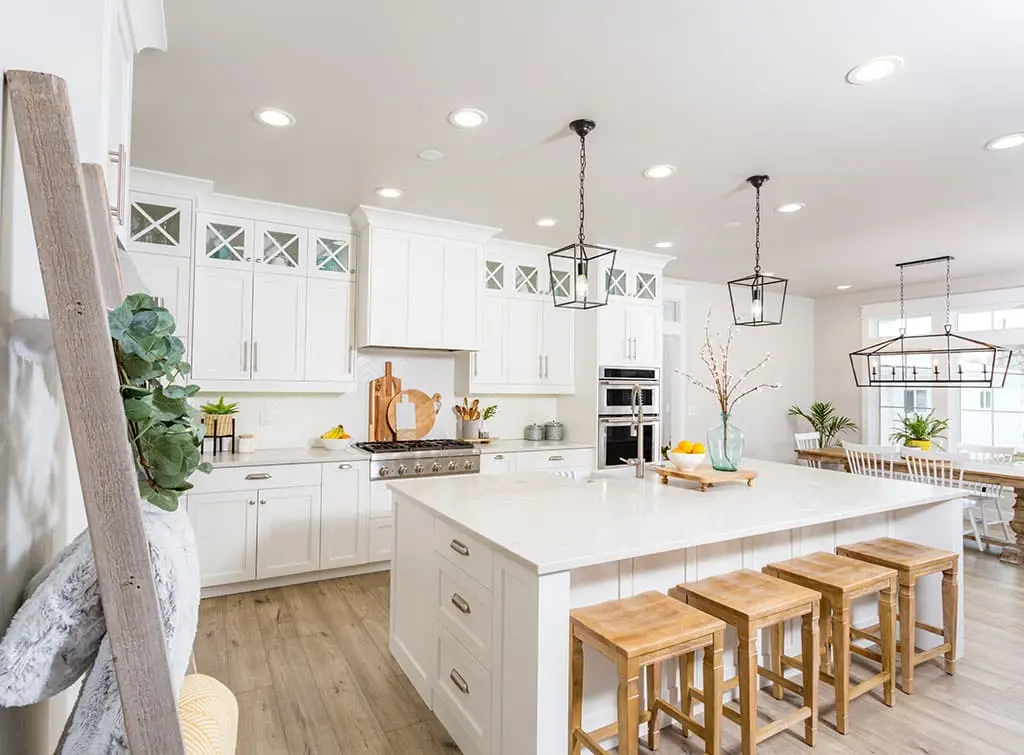
Kitchen ceiling lighting is often the main source of illumination in the room. But it also has a big role play in creating the right ambience in your kitchen, however big or small.
Kitchen ceiling light ideas are also frequently used alongside other types of lighting (wall lamps and cupboard lights, for example) to create a successful layered lighting scheme.
So whether you're designing a room with high or low ceilings, the best lighting for the kitchen ceiling needs careful research.
Kitchen ceiling lights are important for several reasons
Maximise visibility: Good kitchen ceiling lights create well-lit surfaces for food preparation
Enhance safety: Lighter, brighter zones are crucial when working with sharp knives and hot pans
Make a kitchen feel bigger: Properly positioned ceiling lights can make your kitchen feel larger
Create zones: Different types of kitchen ceiling lights can define zones, e.g. for eating, relaxing, or cooking
Ambience: Kitchen ceiling light options also instil mood, especially when fitted with a dimmer switch or different lightbulb temperatures
Design: From country-style pendants to sleek spotlights, kitchen ceiling lights can enhance a kitchen's style tempo
Hygiene: Good lighting can help you spot dirt, spills, holes and cracks so you can clean your kitchen more effectively
See the tradespeople we've checked and recommend for your job
Popular kitchen ceiling lighting options
Traditionally, most kitchens have some sort of kitchen ceiling light - whether it's a row of pendants or a grid of built-in spotlights.
Very often, a kitchen will be layered with a selection of lights to help create depth and warmth, with targeted lighting for cooking and food preparation.
For example, in a kitchen, you may choose recessed downlights for widespread, even illumination, along with a trio of pendant lights above a kitchen island.
In this section, you'll find an overview of some of the most popular ceiling light fixtures for kitchens.
Recessed downlights
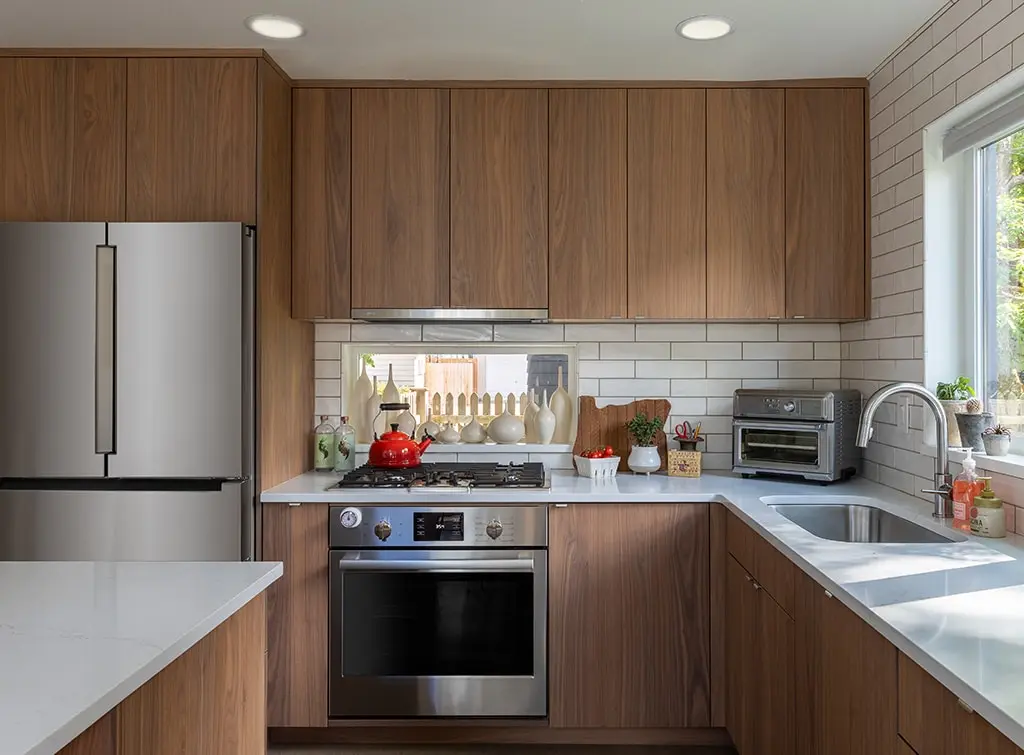
This type of lighting is installed directly into a hole in the ceiling. They blend unobtrusively into the ceiling to enhance a sense of openness and space in the kitchen.
Recessed lighting for a kitchen requires enough space above the ceiling for the housing and wiring to be installed. Ceiling joists will determine the location where they can be installed.
The number of downlights you choose is often determined by the room size and layout and how much natural light is available.
Good for:
Widespread, even illumination across an entire room
Kitchens with low ceilings that don't have height for pendants or chandeliers
Pendant lights
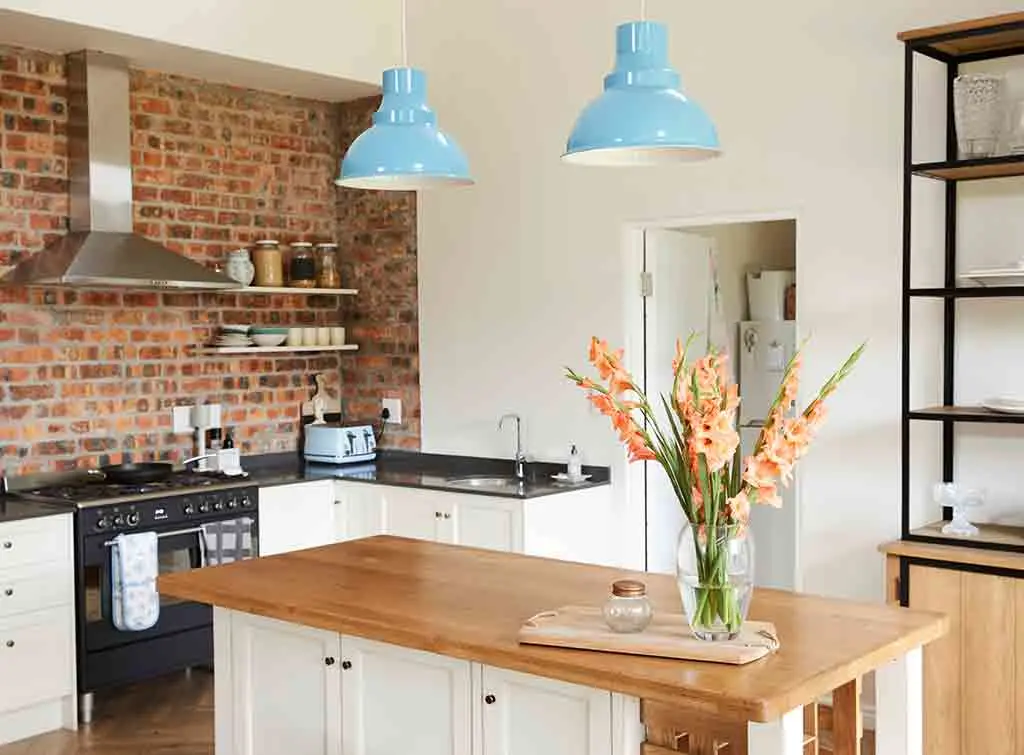
Pendant lights are available in a huge variety of styles and designs and hang from the ceiling on a rod or chain either as a single fixture, a cluster, or on a bar.
In a kitchen, pendant lights bring light closer to the surface of a table, sink, worktop, or island for better visibility and often act as a stylish design feature.
Tip: Choose glass shades if you want to diffuse the light throughout the room, rather than direct the light into one area of the kitchen.
Good for:
General lighting that makes a statement
Task lighting to illuminate a specific zone such as a kitchen island
Creating an intimate mood, especially rise and fall pendant lights, which can be adjusted to different heights
Flush mount ceiling lights

These ceiling light fixtures sit completely flush with the ceiling - or slightly away from it if they have a semi-flush mount design - and give a gentle glow.
They don't require hanging space so offer a versatile, space-saving lighting solution.
Flush mount ceiling lights often blend in with the ceiling but can also be used as a subtle design tool.
Good for:
General illumination for kitchens with low ceilings where a hanging fixture would be impractical
Lighting large areas of a kitchen
Track lighting

Modern track lighting for a kitchen can be fitted with adjustable spotlights to tilt and direct the light to specific areas.
Easy to install, track lighting can also be rearranged, offering a versatile and creative kitchen ceiling lighting idea.
Good for:
Creating ambient lighting in a small kitchen
Highlighting a particular architectural feature in a kitchen such as an alcove
Illuminating dark corners
LED strip lighting
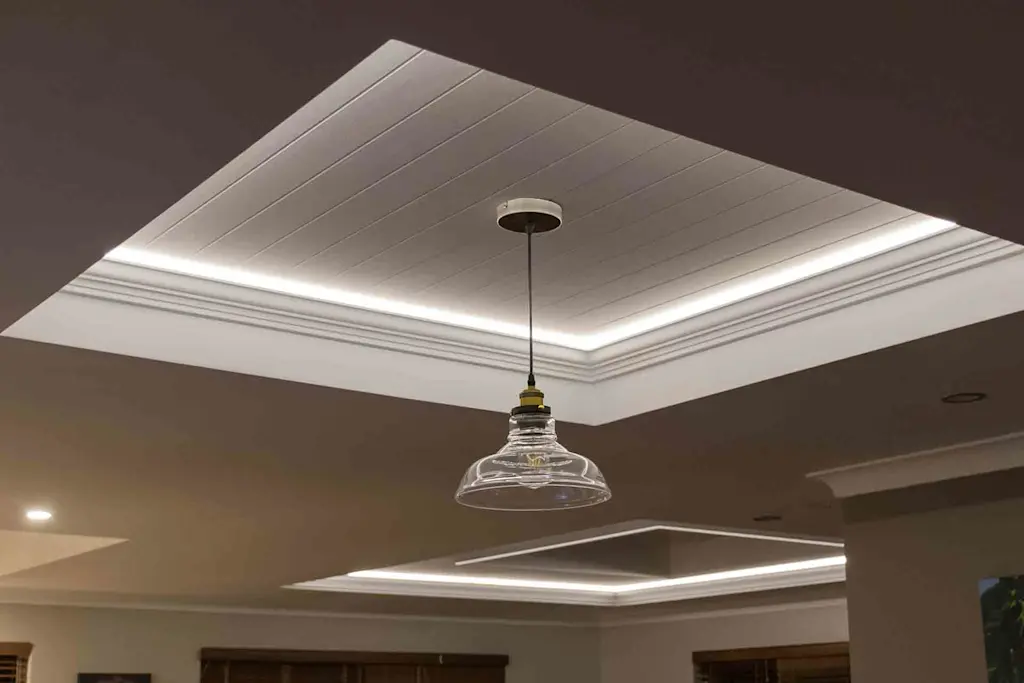
For a slick, modern mood, install recessed LED strip lights into the kitchen ceiling. It’s a brilliant way to add multiple layers of lighting in a kitchen with low ceilings.
LEDs are an energy-efficient kitchen lighting option with a long lifespan, which can help lower your electricity bill and reduce your carbon footprint.
Some LED lights are water resistant, which is important in kitchens. They also come in a variety of colours and can be customised with different light patterns.
Good for:
Kitchens with low ceilings
Awkwardly-shaped rooms as LED strip lights are flexible and can be cut to size
Need a little help from the experts?
For a cohesive design, a kitchen designer can help plan your lighting as part of your overall kitchen renovation. For such an integral part of your home, we think it's worth calling in the professionals to help ensure the right ambience while ticking the boxes for style and function too!
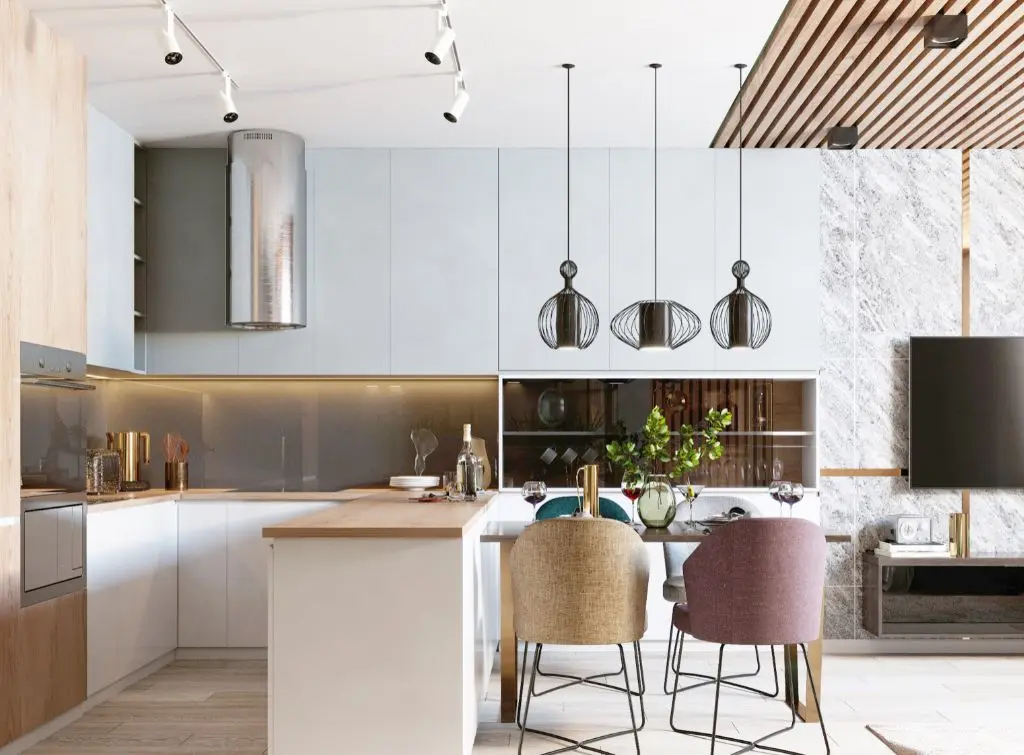
How to choose the best lighting for your kitchen ceiling
Before you rush out and buy a trio of pendants you've spotted, there are some key things to think about when choosing the best kitchen ceiling lighting for your home.
1. Purpose and functionality

There are three main ways to light a kitchen. Once you know what these are, you'll be in a better position to pick the best ceiling lighting for your kitchen.
General lighting
General or ambient lighting provides good overall illumination to ensure the whole kitchen is well-lit. This is especially important in large or open-plan kitchens that need consistent lighting across the entire space.
Why you need it: Day-to-day use of your kitchen - it also adds to the overall look of your design
Types of general ceiling lighting: Pendants or chandeliers and recessed spotlights
Task lighting
Task lighting for a kitchen workspace helps you to complete a specific function. It's usually directed over a worktop, sink, or cooking area.
Why you need it: Safety and efficiency with food prep and cooking, and specific tasks such as reading recipes
Types of task ceiling lighting: Spotlights, especially directional ones on a track
Accent lighting
Accent or decorative lighting helps you create mood in a kitchen and is more about feel than function. It also draws the eye to specific design features.
Why you need it: To make a kitchen feel larger than it is and highlight points of interest in a room, such as a bookshelf or artwork
Types of accent ceiling lighting: LED striplights or track lighting
Remember, no matter the size of your kitchen, every successful kitchen design needs an effective layered lighting scheme throughout the room to serve both function and style.
See the tradespeople we've checked and recommend for your job
2. Room size and ceiling height
The size of the room and the height of the ceiling will influence your choice of ceiling lighting.
For smaller rooms with low ceilings: Choose recessed downlights or flush ceiling lights that won’t overwhelm the space or get in the way
For larger rooms with higher ceilings: Combine a selection of different ceiling lights to create layered lighting – perhaps even a vintage chandelier!
Faced with a low kitchen ceiling? Take a look at these 16 brilliant solutions.
3. Style and design
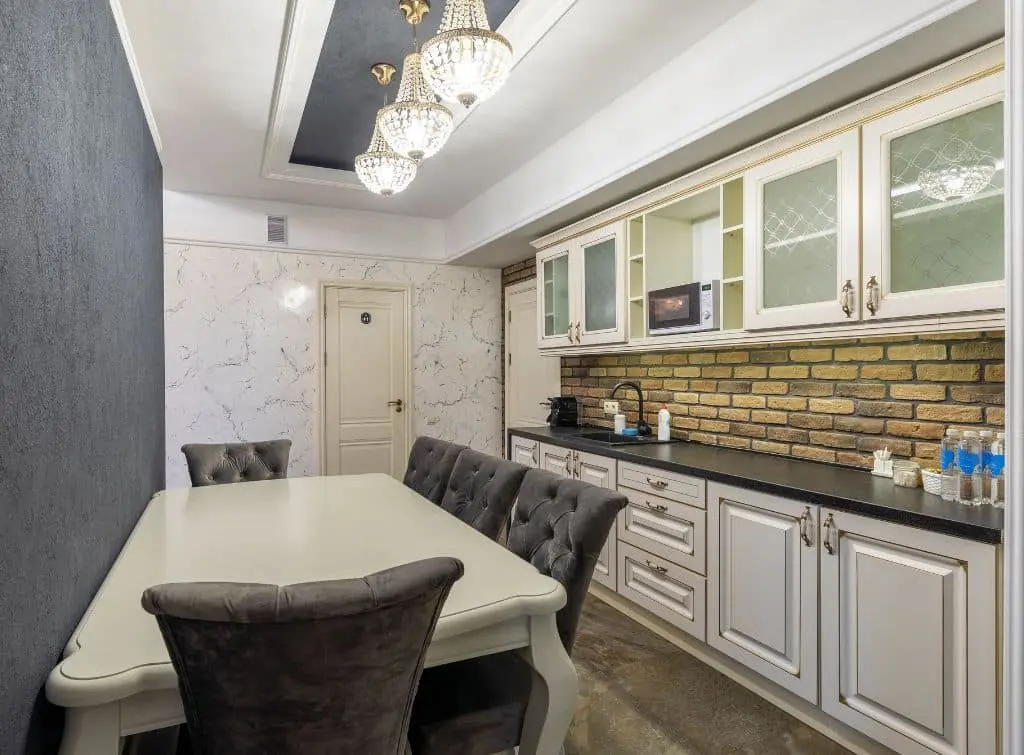
Ceiling lights are not all about functionality. The best kitchen ceiling light options will enhance your overall kitchen decor.
There are so many different designs to suit your kitchen - you'll be spoilt for choice!
Modern kitchens suit recessed spotlights and contemporary track lighting in black and cool metallics
Traditional kitchens look great with chandeliers and classic glass pendants. Use warmer metallics such as brushed gold and brass
Cottage or country kitchens are complemented by retro-style, metal shades in black, duck egg blue, and bright red
However, don't be confined by rigid style rules. Some of the best kitchen designs mix and match old and new, modern and vintage for a unique eclectic style.
4. Energy efficiency
LED bulbs are the go-to option in modern homes. They are energy-efficient, quick to light up, safe, and long-lasting.
They use up to 90% less energy than traditional incandescent bulbs and can last 30% longer, making them a cost-effective option.
Find out how much LED bulbs cost to run in our useful guide.

On Checkatrade, you'll only find trades who meet our high standards and pass up to 12 checks.
5. Safety
There are two important safety considerations when choosing kitchen ceiling lights: IP rating and fire protection.
IP rating
IP (Ingress Protection) ratings measure a light fixture’s ability to withstand moisture and dust – critical for humid, steamy environments such as the kitchen.
The two numbers following ‘IP’ indicate the level of protection: IP44 is suitable for areas with light moisture, for example, a kitchen ceiling. IP65 or higher is needed for any areas exposed to splashes of water.
Fire protection
UK law states that ceiling downlights must be fire-rated. This is because downlights require you to create holes in the ceiling, which creates a potential fire hazard.
However, fire-rated lights help delay the spread of fire, providing an extra layer of safety.
Always hire a qualified electrician to ensure your kitchen ceiling lighting is installed safely and professionally.
See the tradespeople we've checked and recommend for your job
Cost to install kitchen ceiling lighting
The average cost of supplying and installing downlights is around £300 - £500 per project
Electricians tend to charge between £45 - £60per hour
However the cost of installing kitchen ceiling lights will vary depending on the scope of the work, the type of lights being installed, and whether new wiring is needed. For an accurate quote, contact a qualified local electrician.
Researching kitchen ceiling lights as part of a bigger kitchen renovation?
Head to our new kitchen cost guide for help budgeting for the cost of your project.
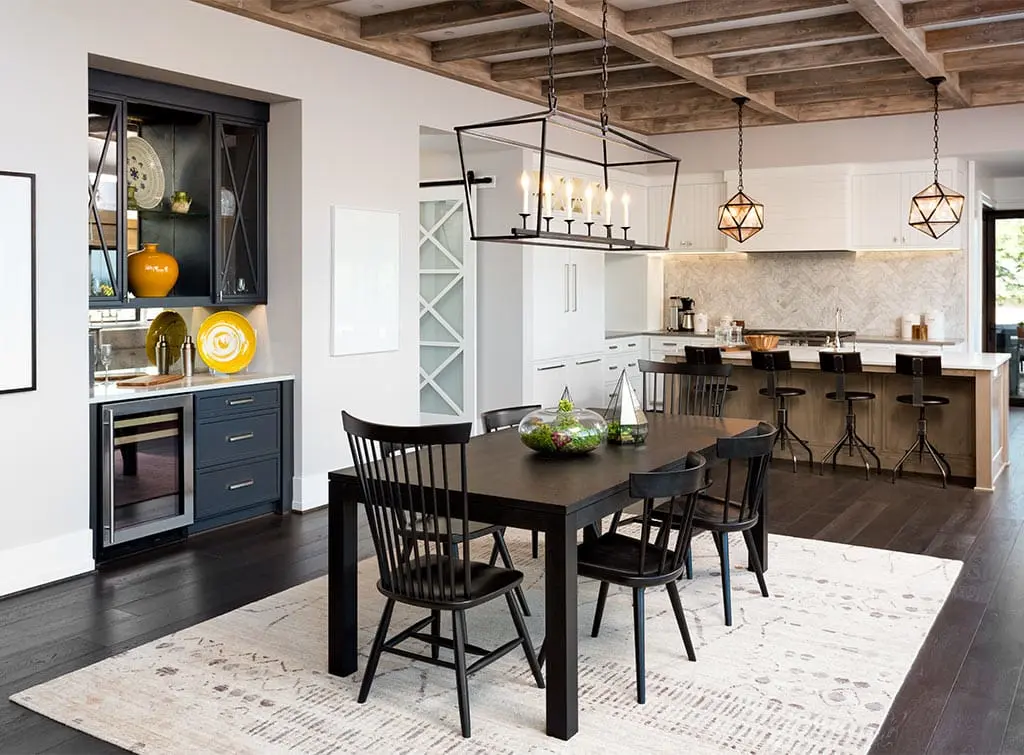
Find a qualified electrician in your area
Hopefully, you now have a clearer idea of the best type of ceiling lights for your kitchen.
To find qualified, Checkatrade-approved, electricians for installation, simply search your postcode, below.
See the tradespeople we've checked and recommend for your job
FAQs
What is the best type of lighting for a kitchen ceiling?
The best type of kitchen ceiling light depends on the size and height of the room and your style preferences.
If you want super modern, go for recessed spots and LED strip lighting. Rows of pendant lights over an island unit are a classic style and create good general lighting.
How many lights do I need in my kitchen?
This depends on the size and layout of the kitchen, as well as how bright you want your lighting.
As a general rule, space recessed lights 2-3 feet apart in smaller kitchens. In larger kitchens, you'll need one recessed light per 4-6 square feet of ceiling space.
Brightness is measured in lumens; the higher the figure, the brighter the light. Kitchens typically need 70-80 lumens per square foot.
You can calculate the amount of light needed for your kitchen by multiplying the room's length and width to get the square footage. Then multiply that number by the desired number of lumens.
Also consider:
How much natural light your kitchen gets
The shape and layout of your kitchen
What you use your kitchen for (just cooking, or eating and socialising too?)
The height of the ceiling
Are LED lights good for kitchen ceilings?
Yes, LED lights are a brilliant choice for kitchen ceilings as they are energy-efficient, long-lasting, and safe.
LED lighting is also versatile and available in different colour temperatures (warm or cool) to suit your desired look.
What colour temperature is best for kitchen lighting?
This depends on the style of your kitchen and what you use it for.
A colour temperature between 3,000K and 4000K would suit the warm tones of a traditional wood kitchen. For a more modern kitchen, a cool white temperature between 4000K to 5000K offers a clean and crisp aesthetic.
It's a good idea to use cooler light temperatures in cooking and food preparation zones to help with visibility.
Do I need a professional to install kitchen ceiling lights?
Yes, a qualified electrician should always be called upon to ensure the safe and compliant installation of ceiling lights.
More Expert Advice Articles
More Electrician Articles
See the tradespeople we've checked and recommend for your job



